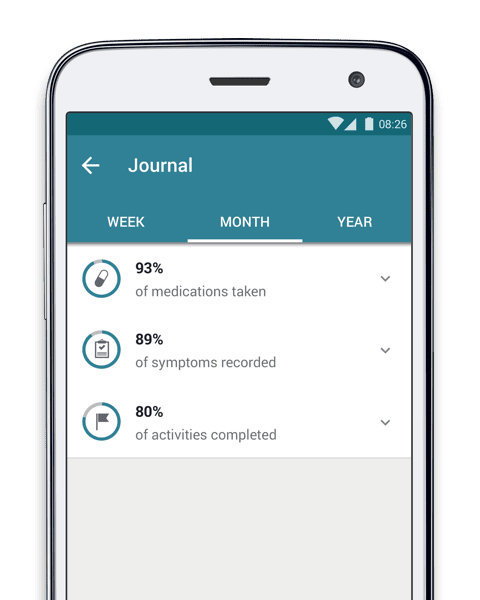Psoriasis – it is just a rash, isn’t it? That is a common misconception, but as the saying goes, it is far more than skin deep. In fact, psoriasis is a complex disease, and one that is not yet fully understood. It is also one that comes in various forms, each of which has its own characteristics. In this article you can learn what psoriasis is, and what differentiates the five types that exist.
What is Psoriasis?
A skin condition would no doubt be many people’s answer to the question: ‘what is psoriasis?’ And, of course, this a perfectly acceptable answer, given that almost all of the symptoms are skin-related. Inflammation, plaques, and dry skin are the common visible effects of psoriasis, which are often itchy, sore, and painful for those living with them.
However, to say psoriasis is only a skin condition would be wide of the mark. While the underlying cause of psoriasis remains something of a mystery, it is now widely believed to be an autoimmune disease. What that means is that something causes the immune system to behave abnormally and attack the body. In those living with multiple sclerosis (MS), for example, the immune system attacks nerve fibres.
In those living with psoriasis, the immune system causes a rapid productions of skin cells, which the body is unable to shed. The excess skin cells cause the plaques that characterize psoriasis.
Why does it matter that plaques are caused by the immune system? Well, those living with psoriasis are around twice as likely to develop another autoimmune disease as the general population. Those include lupus, celiac disease, and rheumatoid arthritis. Around one third of those living with psoriasis will develop psoriatic arthritis.
On top of that, one of the key characteristics of psoriasis is inflammation. A growing pile of evidence suggests that such inflammation can expediate the development of atherosclerosis – the clogging of artery walls that leads of coronary heart disease. While research is still relatively thin, studies suggest this process increases the risk of heart disease in those with psoriasis.
Clearly then, psoriasis is more than just a skin condition. The next question is:
What Are the Different Types of Psoriasis?
There are five types of psoriasis:
- Plaque psoriasis
- Guttate psoriasis
- Inverse psoriasis
- Pustular psoriasis
- Erythrodermic psoriasis
Plaque Psoriasis:
Quick Facts:
- Typical age of onset: 15-30 years old
- Symptoms: Inflamed, raised skin with silvery-white scales that often itch and are prone to cracking and bleeding
- Prevalence in the US: Around 6.5 to 7 million people
Plaque psoriasis accounts for between 80% and 90% of all cases. A plaque is an area of skin that becomes inflamed, raised skin, that has silvery-white scales. These are generally itchy and are prone to cracking and bleeding.
Plaque psoriasis is most prevalent on one’s knees, elbows, and scalp. Anything under 3% body-coverage is considered mild, while 10% or greater is severe. It is the form of psoriasis guest author Howard Chang lives with, who reached his limit when 95% of his body was covered.
Guttate Psoriasis:
Quick Facts:
- Typical age of onset: Childhood or young adulthood
- Symptoms: Small red spots, often itchy
- Prevalence in the US: Around 500,000 people
Guttate psoriasis appears in the form of red spots which are usually far smaller and not as thick as the legions caused by plaque psoriasis. They most commonly appear on the arms, legs, stomach and chest.
While guttate psoriasis doesn’t appear on the soles of your feet, palms, or nails – as other forms of psoriasis can – spots can still cover large areas of the body. In the case of John Redfern, who also shared his story with us, coverage reached 80% of his body.
Guttate is the second most common form of psoriasis, affecting up to 10% of people living with psoriasis. It is possible for guttate psoriasis to be present alongside plaque psoriasis in an individual.
Inverse Psoriasis:
Quick Facts:
- Typical age of onset: 15-30 years old
- Symptoms: Smooth, shiny rashes under folds of skin and genetalia
- Prevalence in the US: Around 250,00 to 500,000 people
Inverse psoriasis usually occurs in folds of skin, such as in the armpits or under the breasts, and around the genitalia. Inverse psoriasis causes a smooth, shiny rash that is quite in contrast to the raised and dry legions caused by other forms.
Between 3% and 7% of people living with psoriasis have inverse, often in combination with another form. Due to the sensitivity of the body parts affected, the inflammation caused by inverse psoriasis can cause a great deal of discomfort and can be difficult to treat.
Skin folds are known as flexures, so you may see inverse psoriasis called flexural psoriasis.
Pustular Psoriasis:
Quick Facts:
- Typical age of onset: 40-50 years old
- Symptoms: Clusters of small bumps filled with thick white pus, on red skin
- Prevalence in the US: Rare (precise figures unknown)
Pustular psoriasis is a rare and serious form characterized by red skin with raised white bumps (pustules) that contain pus. The onset can be extremely sudden, with the skin initially becoming dry and tender and pustules appearing a few hours later.
When the pustules dry out a day or two later it leaves a glazed and smooth layer of skin on which new pustules may appear.
Pustular psoriasis takes different forms. Generalized pustular psoriasis (also known as Von Zumbusch) spreads rapidly around the body, is often accompanied by fever, nausea, headache, and other symptoms, and is a medical emergency. Palmoplantar pustulosis (PPP) is a localized variant that affects the palms and soles of feet, while the rarest form, acropustulosis, affects the fingertips and the ends of the toes.
Erythrodermic Psoriasis:
Quick Facts:
- Typical age of onset: 50+ years old
- Symptoms: Red, dry skin covering >90% of the body
- Prevalence in the US: Between 1% and 2.25% of all psoriasis cases
The word erythrodermic is a combination of the Greek word for ‘red’ (erythrós) and ‘skin’ (dérma), so it is not surprising that erythrodermic psoriasis is characterized by severe reddening of the skin, covering greater than 90% of the body. It often occurs in people living with another form of psoriasis and, like generalized pustular psoriasis, it can be life-threatening.
The rash can spread extremely quickly. Unlike plaque psoriasis, which causes flaky lesions, erythrodermic psoriasis often causes the skin to shed in large sheets.
What About Psoriatic Arthritis?
While psoriatic arthritis is not a form of psoriasis per se, it is intrinsically linked.
Inflammation of the skin is a key characteristic of psoriasis. For those living with psoriatic arthritis, inflammation also affects joints, most commonly the knees, ankles, and those in the feet. Symptoms can include warmth, pain, stiffness, and swelling in the affected joints, as well as pain in the lower back. Psoriatic arthritis often occurs between the age of 30 and 50.
Symptoms can precede those of psoriasis or occur around the same time but will usually come several years after one is diagnosed with psoriasis. Between 20% to 30% of people living with psoriasis are estimated to develop psoriatic arthritis.
Far from being just a skin condition, psoriasis is a complicated disease and one that is yet to be fully understood. While many people live with mild and manageable disease, the complexities of psoriasis go to show that it is far more than skin deep.
Take a look at some of the other posts on the MyTherapy blog:



